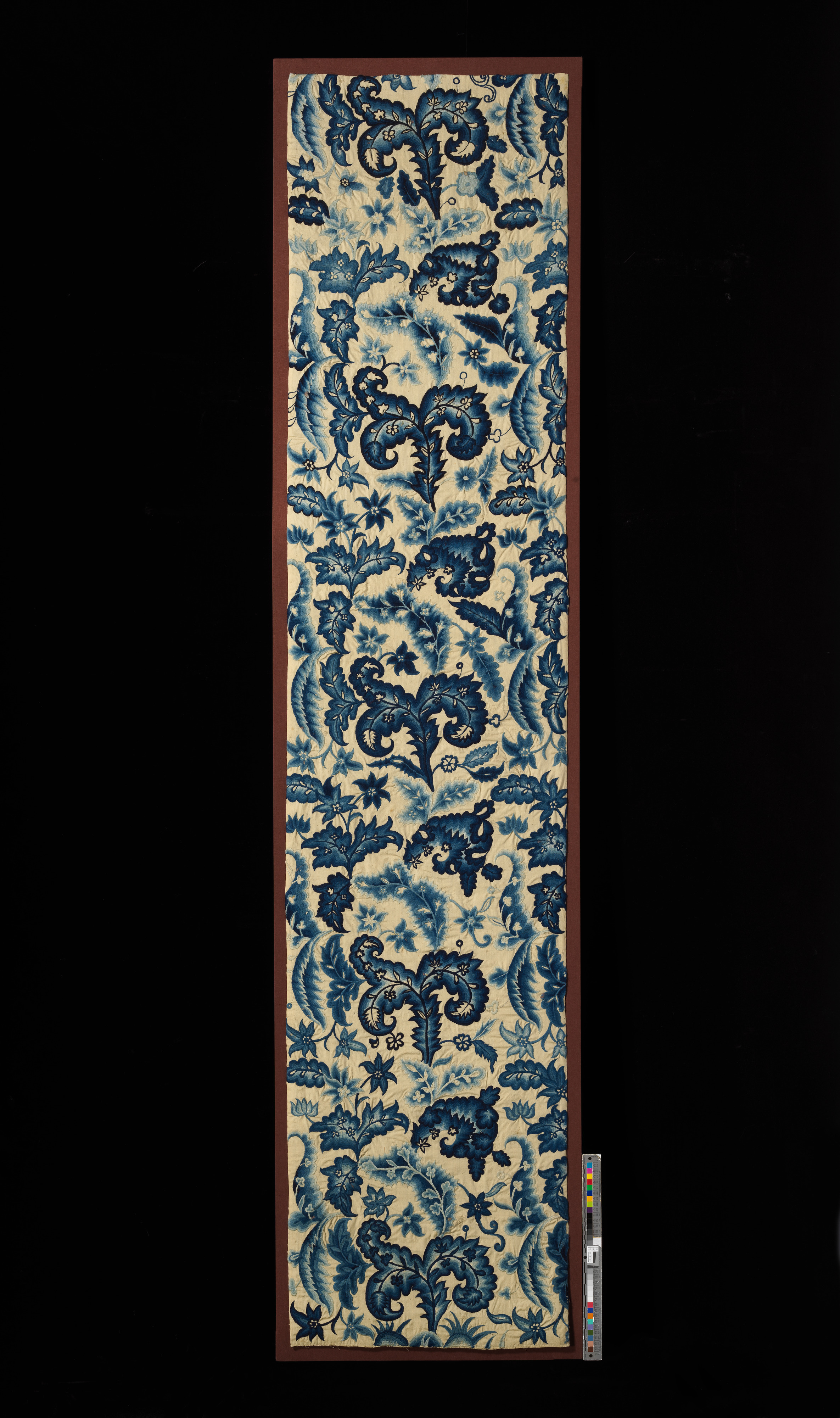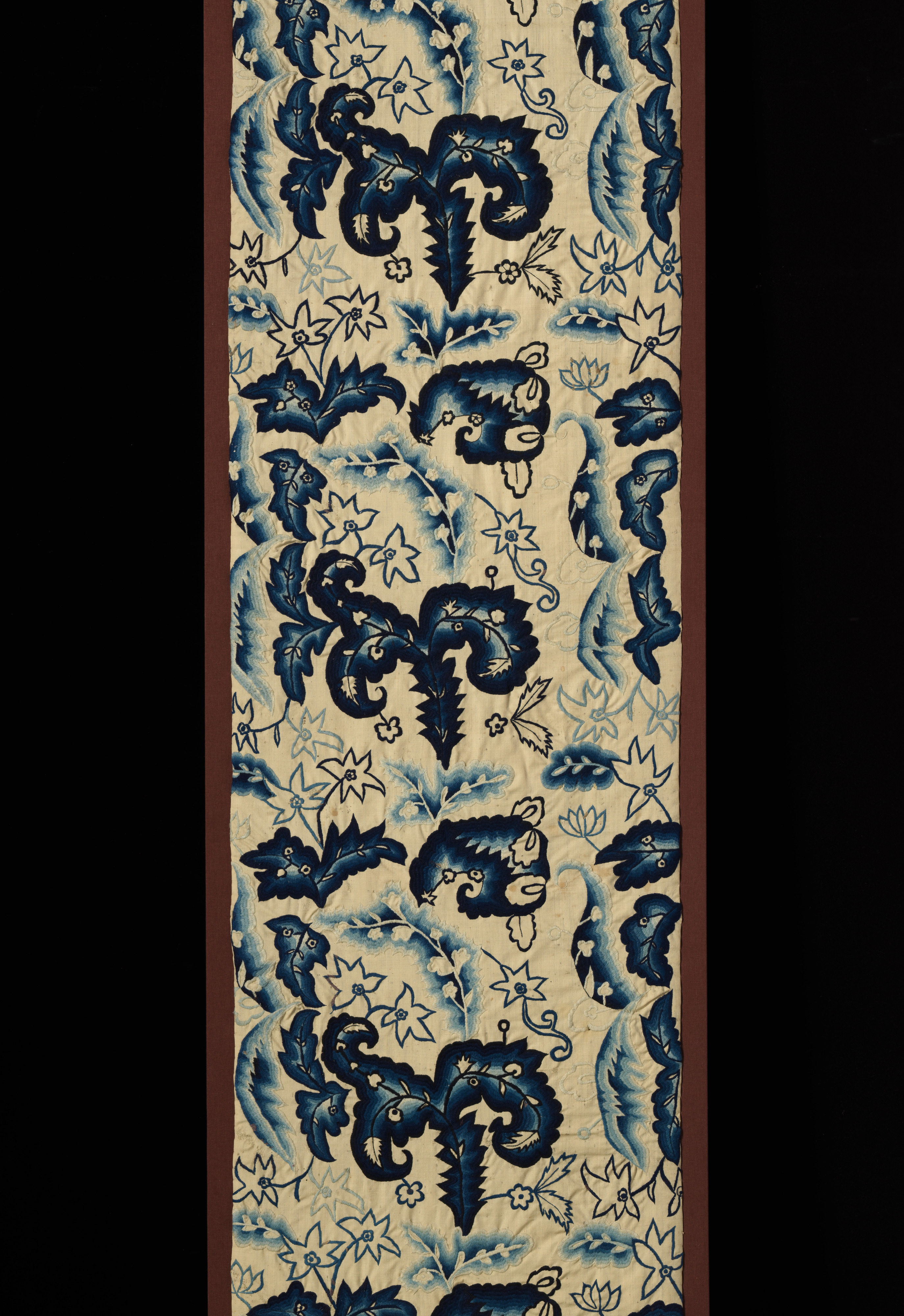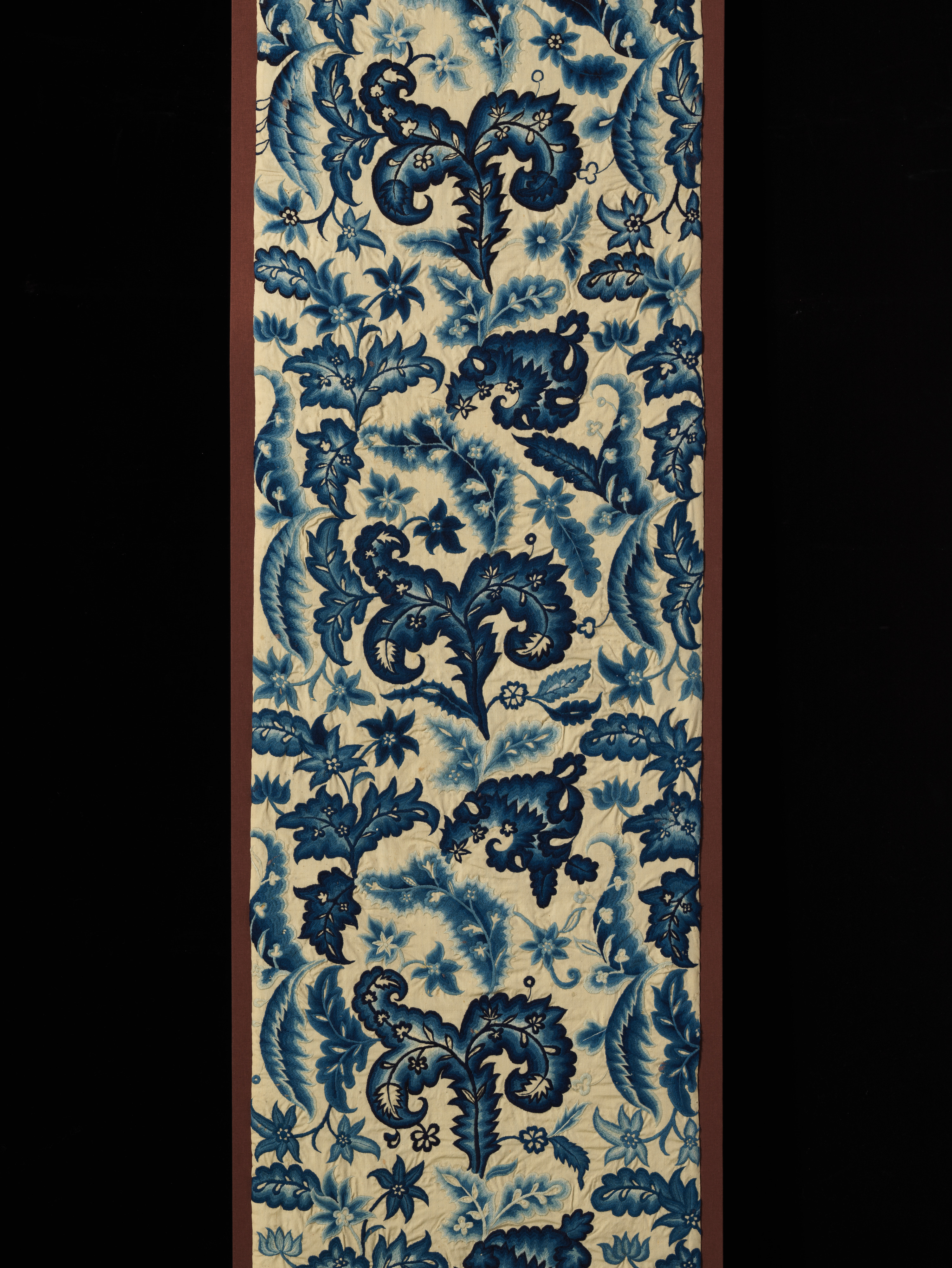Pair of bed curtains
Not on view
British wool embroidery, known as crewel embroidery, was a nearly ubiquitous method of decorating furnishing textiles from the 16th through the 18th centuries. Wool could easily be dyed with the natural dyes of the period in a wide array of vivid colors. In the late 17th and early 18th centuries, one of the most popular forms was variations on the Tree of Life motif, inspired by the colorful painted cotton palampores of the same design that were imported into Britain. This pair of bed curtain panels is exceptional for its unusual design, which is more closely related to woven silk textiles of the period. On this grand scale, the leaves also hark back to late medieval decorative cabbage-leaf verdure tapestries. The blue and white palette of the embroidery certainly reflects the immense popularity of the Chinese export and Dutch Delft ceramics that were avidly collected in Britain.
These curtain panels would have formed part of a set of hangings, which would have also upper and lower valances, a head cloth, a bed cover or counterpane and wider curtains that would enclose the entire bed when drawn. As the hanging curtains often saw the least amount of physical wear, these are often the elements that survive from a matched set. In addition, the remainder of the textile furnishing in such a bedroom would have coordinated with the bed hangings: seat furniture covers, window curtains and possibly wall hangings.
Due to rights restrictions, this image cannot be enlarged, viewed at full screen, or downloaded.
This artwork is meant to be viewed from right to left. Scroll left to view more.






